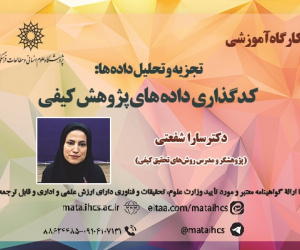گونه شناسی اختلاف روش عراقی و خراسانی در فقه شافعی و دلایل به وجود آمدن آن (مقاله علمی وزارت علوم)
درجه علمی: نشریه علمی (وزارت علوم)
آرشیو
چکیده
طرق عراقی و خراسانی دو روش فقهی در مذهب شافعیه است. طرق فقهی به اختلاف روش فقها در حکایت و نقل مذهب اطلاق م یشود. از سده ی چهارم به بعد، بیشتر اختلافات منقول در متون فقهی مذهب شافعی به طریقه عراق به ریاست ابوحامد اسفراینی و طریقه خراسان به ریاست قفال مروزی مشهور به صغیر منسوب شده است. تعدد و کثرت منقولات، موجب عدم انتظام و در نتیجه صعوبت در فهم و استفاده از آنها در بیان قول معتمد مذهب و همچنین امر افتا شده است؛ لذا بررسی امکان انتظام بخشی انواع اختلافات فقهی این دو طریقه و کشف اسباب ظهور آنها جهت تسهیل در فهم، حفظ و درک این اختلافات ضروری است. از این رو پژوهش حاضر به دنبال پاسخگویی به این پرسش است که انواع اختلافات در طرق حکایت مذهب و اسباب پیدایش آن چه بوده است؟ نتایج این پژوهش که به روش توصیفی و تحلیلی و با استناد به داده های کتابخانه ای انجام شده، آن است که اختلافات در این دو طریقه شامل پنج مورد است: اختلاف دو طریقه در وجود وعدم وجود اختلاف، اختلاف در کمیت، اختلاف در میزان گستره اقوال، اختلاف در نسبت اقوال حکایت شده به امام شافعی یا وجوه تخریج و اختلاف در محل بنای اقوال. همچنین اسباب اختلاف دو طریقه در موارد زیر قابل استقراء می باشد: اختلاف به سبب تفسیر و تعلیل اقوال امام شافعی، اختلاف به سبب روش های مختلف تعامل با اختلاف اقوال امام شافعی و اختلاف به سبب پذیرش یا عدم پذیرش طرق و وجوه منقول در مذهب.Typology of the Differences between Iraqi and Khurᾱsᾱnī Methods in Shafi'i Jurisprudence and the Reasons for Their Emergence
The Iraqi and Khurᾱsᾱnī approaches are two jurisprudential methods in the Shafi'i school. Jurisprudential approaches refer to the differences in methods used by jurists in narrating and transmitting the school's doctrine. From the fourth century onwards, most of the differences reported in Shafi'i jurisprudential texts have been attributed to the Iraqi method, led by Abu Hamid al-Isfarᾱyinī, and the Khurᾱsᾱnī method, led by al-Qaffᾱl al-Marwazī, known as al-Saghīr. The multiplicity and abundance of narrations have led to a lack of organization and, consequently, difficulty in understanding and using them to state the school's authoritative opinion and for issuing fatwas. Therefore, it is necessary to examine the possibility of organizing the types of jurisprudential differences between these two methods and to discover the reasons for their emergence to facilitate understanding, preservation, and comprehension of these differences. Thus, this research seeks to answer the question: "What were the types of differences in the methods of narrating the school's doctrine and the reasons for their emergence?" The results, conducted through descriptive and analytical methods and based on library data, are that the differences between these two methods include five cases: differences in the existence or non-existence of disagreement, differences in quantity, differences in the extent of opinions, differences in attributing narrated opinions to Imam Shafi'i or to derived opinions (wujūh takhrīj), and differences in the basis of opinions. Additionally, the reasons for the differences between the two methods can be inferred in the following cases: differences due to interpretation and reasoning of Imam Shafi'i's opinions, differences due to various methods of dealing with conflicting opinions of Imam Shafi'i, and differences due to acceptance or rejection of narrated methods and opinions in the school.








